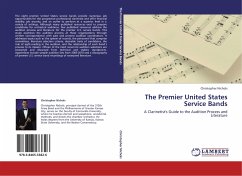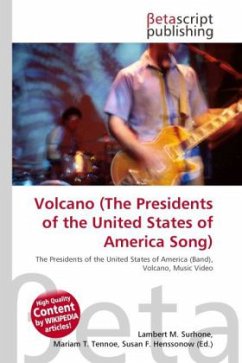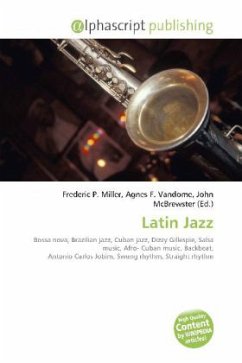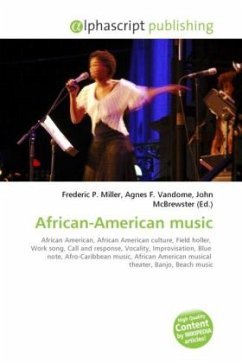
Latin American Music in the United States
Versandkostenfrei!
Versandfertig in 6-10 Tagen
42,99 €
inkl. MwSt.

PAYBACK Punkte
21 °P sammeln!
Latin music has long influenced American popular music, jazz, rhythm and blues, and even country music. For an early example (1914), the bridge to "St. Louis Blues"-- "Saint Louie woman, with her diamond rings"--has a habanera beat, prompting Jelly Roll Morton to comment, "You've got to have that Spanish tinge". Many an American band has added a conga player, maracas, or other Latin percussion for just that reason. The Argentine tango was a worldwide success in the 1930s. Tango dancers and records could be found from Los Angeles to Beijing. In more recent times, artists such as Carmen Miranda,...
Latin music has long influenced American popular music, jazz, rhythm and blues, and even country music. For an early example (1914), the bridge to "St. Louis Blues"-- "Saint Louie woman, with her diamond rings"--has a habanera beat, prompting Jelly Roll Morton to comment, "You've got to have that Spanish tinge". Many an American band has added a conga player, maracas, or other Latin percussion for just that reason. The Argentine tango was a worldwide success in the 1930s. Tango dancers and records could be found from Los Angeles to Beijing. In more recent times, artists such as Carmen Miranda, Desi Arnaz, Xavier Cugat, and Pérez Prado ("The Mambo King") were popular with audiences of all cultures. Judy Garland's first hit, as a member of the "Gumm Sisters", was "La Cucaracha", right down to the line about marijuana. It was common in dance halls in the 30s and 40s for a Latin orchestra, such as that of Vincent López, to alternate with a big band because dancers insisted on it. Latin music was extremely popular with dancers, not only the samba, paso doble, rumba, and mambo, but even the conga.












